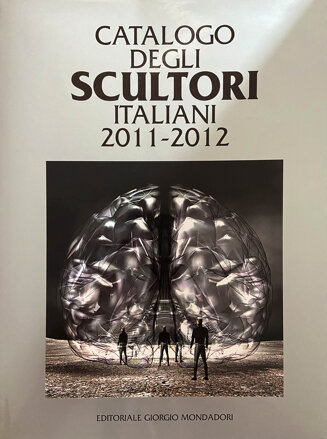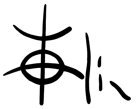® Copyright 2025 | ART RAMPIN FRANCESCO | Tutti i diritti riservati.

CATALOGO DEGLI SCULTORI ITALIANI
2011 - 2012
EDITORIALE GIORGIO MONDADORI
DETTAGLI
Genere | Arte e illustrati - Storia dell'arte - Altri stili ed epoche
Editore | Editoriale Giorgio Mondadori
Formato | Rilegato
Pubblicato | 2011
Pagine | 334
ISBN | 9788860524003


LAPIDUM NATURA RESTAT | FRANCESCO RAMPIN E L’ARTE DI SCOLPIRE IL PORFIDO
Francesco Rampin inizia la sua avventura artistica dalla pittura. Da questa assorbe una caratteristica su tutte: fondere l’uso del colore armonicamente. Tale peculiarità trasmigra con naturalezza nelle sue sculture. Giochi di luce e di colore sono le caratteristiche principali delle opere di Francesco Rampin.
L’utilizzo del porfido, pietra difficile da trattare, crea iridescenze enigmatiche che producono un effetto di tridimensionalità nelle opere.
Per comprendere interamente la lezione di Rampin lo spettatore dovrà spogliarsi del solito ruolo di mero astante e interagire con la scultura, guardarla da vicino, girarle intorno. Solo così si coglieranno i giochi di luce derivanti dalla pietra unita alla solennità del ferro. Colori ingannatori. Questa è la poetica di Rampin. Strutture che cambiano a seconda della visuale.
Una grande importanza ha il materiale di supporto del porfido. Queste strutture in ferro che sostengono la pietra hanno una doppia funzione. In alcuni casi penetrano la struttura stessa del monolito creando un amal- gama armonioso. Penso ad opere come Doppio totem o Diapason, dove i due materiali si fondono alla perfezione creando un’euforica continuità. In altri casi invece, l’intelaiatura in ferro e la pietra danno origine a due strutture diverse, quasi una scultura nella scultura. Due entità differenti che creano un rapporto simbiotico tra la pietra e il ferro. È il caso per esempio di Bilancia dello scultore in cui l’armatura è un’opera a sé stante che vive di vita propria, nonostante la convivenza con diversi materiali.
Sono opere importanti che strizzano l’occhio all’arte di Constantin Brâncusi, ma anche alla tradizione italiana novecentesca di Ettore Colla.
Una scultura dal forte impatto visivo quella di Francesco Rampin, dove tecnica e talento si fondono in una perfetta concordanza di colori e strutture.
Paolo Levi
LAPIDUM NATURA RESTAT | FRANCESCO RAMPIN AND THE ART OF SCULPTING PORPHYRY
Francesco Rampin begins his artistic adventure starting from the painting’s lesson. According to this latter, he is able to absorb a particular characteristic among the others, that is to say to blend the colours in a harmonic way. This peculiarity passes on his sculptures naturally. Plays of light and colours are the main features of Francesco Rampin’s works.
The use of porphyry, a difficult stone for what concerns its treatment, gives the opportunity to create enigmatic and iridescent sensations which produce a three-dimensional effect in the concept of the works.
To understand Rampin’s lesson in a wide way, the audience will have to dismiss the usual role of a mere by-stander and try to interact with the sculpture, to look at it closely, to turn around it, reaching in this sense a better comprehension of the same artistic activity. Only in this way you can appreciate the plays of light which come from the stone, connected to the iron’s solemnity. For this reason, Rampin’s poetics can be delineated thanks to a particular language,which mixed both conceptual and artistic contents: the colours and their power of deceiving. His structures keep inside their inner essence the possibility of changing, depending on the view of the onlooker.
A great importance has the material, the porphyry. These ironworks, which hold the stone up, have also a double function. In some cases they penetrate into the same structure of the monolith creating a well-proportioned mixture. I think about some works, as Double Totem or Diapason, where the two materials melt each other in a very perfect way, inventing an euphonic continuity. On the contrary, in other situations the ironmade framework and the stone give birth to two unlike structures, a sort of sculpture inside the sculpture. Two different entities are able to create a symbiotic relationship between stone and iron. It’s the case of The Sculptor’s Balance, for example; here the framework is an indipendent work with an own essence, in spite of the fact that it has to live together with other materials.
These are very significant works: they show some influences coming from the art of Constantin Brâncuşi, but also from Ettore Colla and the Italian tradition of the 20th century.
Francesco Rampin’s sculpture has a strong visual impact, where technique and ability combine each other in a perfect concordance of colours and structures.
Paolo Levi
